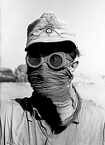pompack
Posts: 2582
Joined: 2/8/2004
From: University Park, Texas
Status: offline

|
quote:
ORIGINAL: amatteucci
quote:
ORIGINAL: solops
Poop...wish I had known this BEFORE I shelled out $90. All the work put in for historical accuracy and detailed combat modelling is largely undone by this "Stack Of Three" rule.
I was surprised too about that restriction at first. I thought: "Wait, we have powerful computers to instantly calculate troop and equipement densities and here we resort to this simplicistic boardgame-like stacking rule?".
But, after examining the rules about Soviet Corps' formation and trying how stacking actually works in the tutorial, I realized that it was a simple yet elegant solution to the actual problem on how to represent doctrinal limitations and historical unit frontages.
Let's consider soviet Rifle Divisions, just for example.
In 1941 a Soviet Rifle Division was expected to defend a sector of 14-20km deployed in a single echelon (I'm quoting figures from "Soviet Military Operational Art - In pursuit of Deep Battle" by col. D. Glantz) while attacked in sectors 5-6km wide. Considering that a game hex is 16km (10 miles) wide, the aforementioned figures mean one Rifle Division per hex in defense and three Rifle Divisions per hex in attack. Game staking works.
But it's not the end of the story. Starting from 1942 Soviet Rifle Divisions attack frontages began to shrink. From the 5-6km of 1941 and 3-4km in 1942 to 1.5-2km in 1945! That means that by the end of the war, the Red Army typically massed while attacking, in a given sector, three times the riflemen it was able (due to training and doctrine) to mass at the start of Barbarossa. In the game you can do too this consolidating three Rifle Divisions into a single Corps, and this without changing the basic stacking rules. The additional benefit is that it is impossible, for the Soviet player, to use hindsight and force its unit to use tactics they were simply not taught or trained to in 1941. The same thing could, more or less, be said for mechanized formations.
Summing up, in my opinion, this is probably the best solution to the density problem, given the constraint of an hex&counter type wargame.
And don't forget the reserve rule. Even with the three hex limit for commiting reserves to offensive action you can pump a LOT of divisions into the fight if you have good leaders.
|
 Printable Version
Printable Version






















 New Messages
New Messages No New Messages
No New Messages Hot Topic w/ New Messages
Hot Topic w/ New Messages Hot Topic w/o New Messages
Hot Topic w/o New Messages Locked w/ New Messages
Locked w/ New Messages Locked w/o New Messages
Locked w/o New Messages Post New Thread
Post New Thread